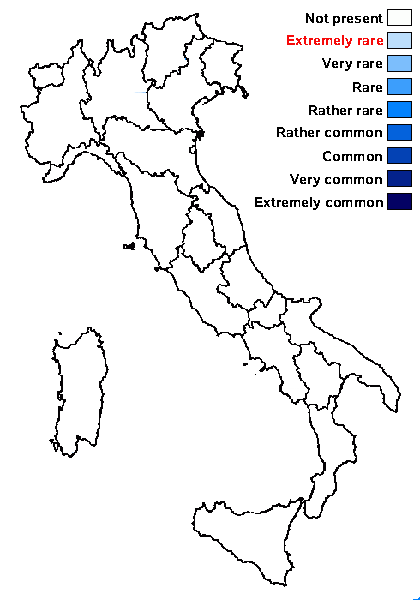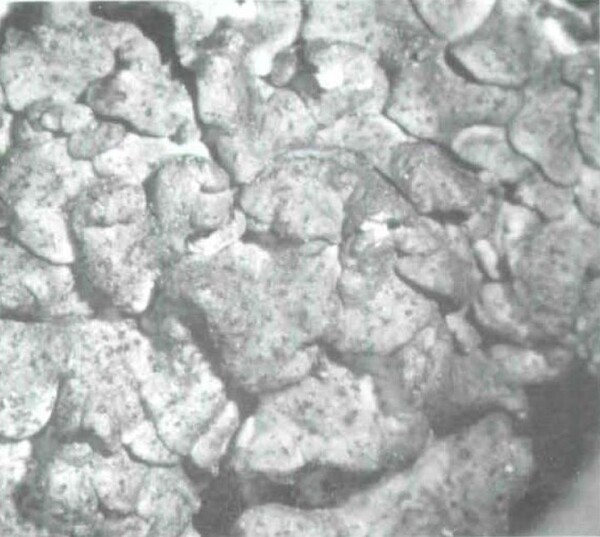Neocatapyrenium latzelii (Zahlbr.) Breuss
Ann. naturh. Mus. Wien, Ser. B, Bot. Zool., 98, suppl.: 41, 1996. Basionym: Dermatocarpon latzelii Zahlbr. - Öst. bot. Z., 68: 70, 1919
Synonyms:
Distribution:
Description: Thallus squamulose, of imbricate, 3-7 mm wide, 0.3-0.5 mm thick, pale to dark brown, lobate squamules forming flattened to convex pillows. Lower surface pale brown, without rhizohyphae, attached by up to 1 mm thick and to 15 mm long, simple or sparingly branched, pale rhizines. Upper cortex paraplectenchymatous, 50-70 µm thick, of 5-8 µm wide cells, overlain by a thin epinecral layer; medulla white, prosoplectenchymatous; lower cortex clearly delimited from the medulla, with rounded to angular cells. Perithecia black, pyriform to globose, up to 0.55 mm across, immersed in the squamules, without involucrellum. Exciple colourless; hamathecium of periphyses, interascal filaments absent. Asci 8-spored, clavate, the wall I-, with biseriately arranged spores. Ascospores 1-celled, hyaline, broadly ellipsoid. 13-17 x 6.5-8.5 µm. Pycnidia laminal, immersed in the squamules, inconspicuous, Endocarpon-type. Conidia bacilliform, 4.5-8.5 x 1-1.5 µm. Photobiont chlorococcoid. Spot tests: cortex and medulla K-, C-, KC-, P-, UV-. Chemistry: without lichen substances.Note: a mainly Mediterranean species growing on weathered calcareous rocks, often in fissures, known from the Balkan and the Iberian Peninsulas; to be looked for in Italy.
Growth form: Squamulose
Substrata: rocks
Photobiont: green algae other than Trentepohlia
Reproductive strategy: mainly sexual

Predictive model
Growth form: Squamulose
Substrata: rocks
Photobiont: green algae other than Trentepohlia
Reproductive strategy: mainly sexual

Predictive model
 INDEX FUNGORUM
INDEX FUNGORUM
 GBIF
GBIF


